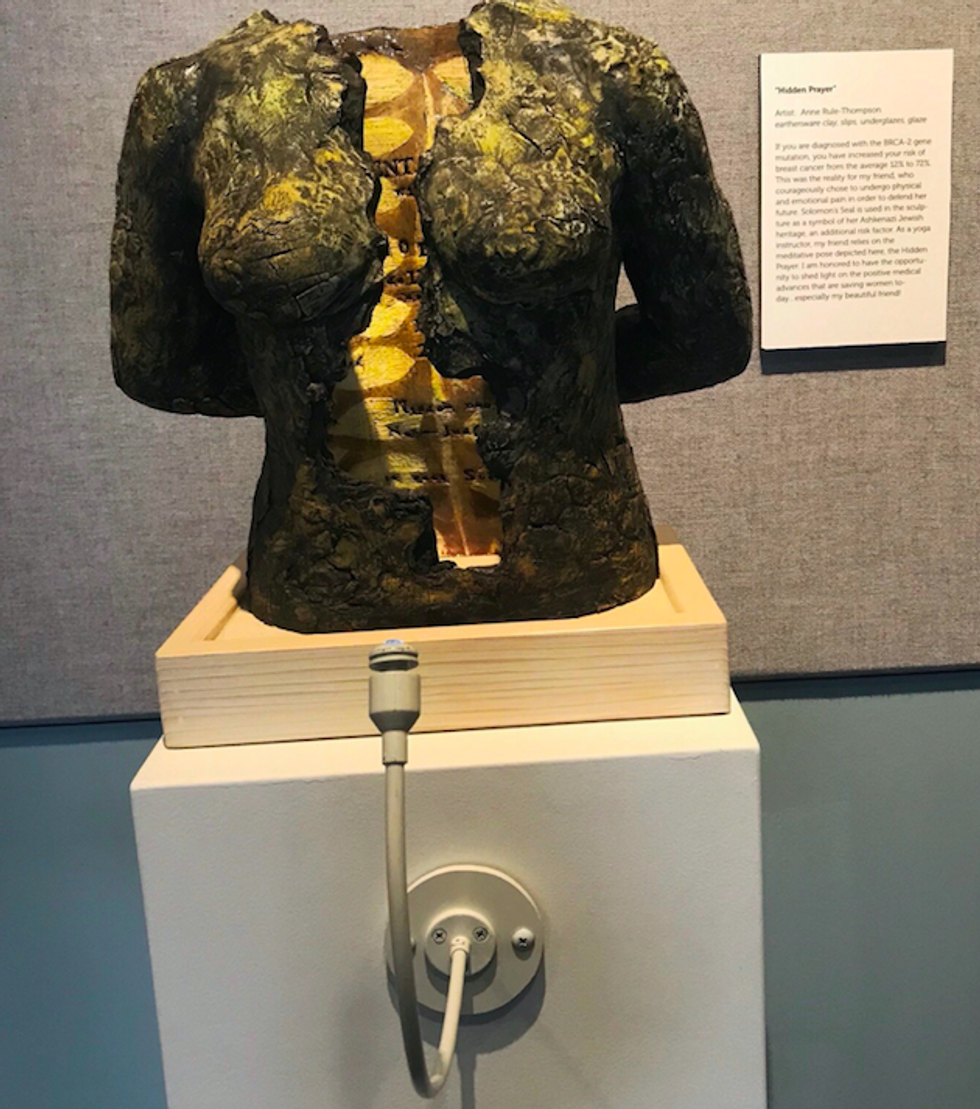As stated in their missions statement: The Bodice Project was created as a way to aid men and women with their emotional struggles with breast cancer who had undergone mastectomies as part of their treatment. The sculptures on display at the West Virginia University Erickson Alumni Center as part of this collection shared this and more with their audience. The casts of the men and women's torsos were transformed into works of art as they reflected on their treatment and began to heal. The walls of the exhibit were encased with quotes from each of the survivors, depicting their reactions to the project and information they wished to share to their viewers.
The atmosphere of the exhibit was absolutely breathtaking, and completely different than anything I expected it to be. As I walked in, I was not bombarded with cases of turmoil, but a strong sense of collective calmness. Most of the artwork was light and touching, not like the harshness that I pictured: it was unlike anything I had ever seen. There were many abstract sculptures, all completely unique from the rest.
I noticed that there was no music playing, as I had seen in other art exhibits similar to this one, and was shocked. There was no need for light background noise, because the power of each of the sculptures spoke for themselves. Even in the silence, there was no denseness in the air, only beauty.
There was one sculpture in particular that caught my attention. "Hidden Prayer" by Anne Rule-Thompson who made the piece for her close friend. The artwork was dark and earth-toned, depicting the woman's hands behind her back. This was captivating to me, as all of the other pieces of art did not have arms. It seemed as though the woman wanted everyone to see what she had been through, and put it on display by letter her arms out of the way. There was no shame in having the breast cancer, and it seemed like she was at peace with it.
In the middle of her chest, there was a large crack in which you could look into her body and see exactly what she held onto. This was a prayer. The brief description beside "Hidden Prayer" revealed that this was a Ashkenazi Jewish prayer that was very important to the woman's heritage. It was difficult to see the entire prayer, and I spent minutes peeking inside from different angles for better clarity and to see it's length. This made me think of all the readings we have done about how physicians need to see the patient from different angles to get their full story, and usually this was hard to do. Although, she let a large section of herself open to the audience so that if they tried hard enough to understand what she was trying to communicate, then they could see the entire picture.
The humility of the exhibit wasn't overwhelming, and I could honestly stand there for hours and read each and every one of the quotes and consume all of the energy in the room. There were many different reactions that the patients had portrayed through the many quotes. "I'm not in the breast cancer box", one quote stated, "I've been a survivor since I came out of my mum". Like many of the sculptures, this quote encompasses that every survivor has a different message to be spread, and a way that they want to been seen. This particular patient wants to be seen like every other woman in the world, and doesn't want to be confined to a specific group of people, in which they may be treated different than everyone else.
I am thankful that I got to experience the Bodice Project, as it opened my eyes to the diverse stories of each breast cancer patient. It is one thing to read about it, and another to experience it like the Bodice Project allows you to do.



















